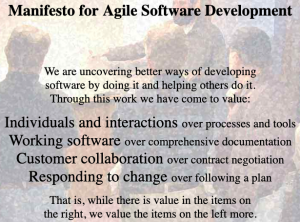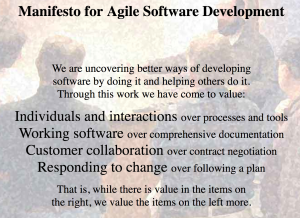 To me, development projects fail or succeed in the first few weeks. Once a project starts off in the wrong direction, momentum and expectations tend to prevent a return to the proper path. With today’s wealth of database options each addressing exciting new possibilities, the right choice for the application’s data foundation plays a large part in steering a project to success.
To me, development projects fail or succeed in the first few weeks. Once a project starts off in the wrong direction, momentum and expectations tend to prevent a return to the proper path. With today’s wealth of database options each addressing exciting new possibilities, the right choice for the application’s data foundation plays a large part in steering a project to success.
At this year’s Enterprise Data World conference, William Brooks showed the relations among different data modeling approaches, in effect detailing how to derive nine different model types from a detailed conceptual entity relationship model. Mr Brooks’ presentation hinted at a way to correctly frame up your data direction early on in a project, setting the stage for success.
According to his presentation, called “Symmetry in Modeling Approaches“, the different model types — relational, graph, dimensional, JSON, XML, and so on — all represent different perspectives on the same data relationships. Each suits a different application, like dimensional for reporting applications, data vault for data warehouses, graph databases for multi-layered search, and so on. However, if properly constructed they all map back in predictable and specific ways to a normalized entity-relationship model.
I and others write that ER modeling should be integral to requirements definition, but Mr. Brooks’ presentation implies that ER modeling can also serve as the basis for application architecture as well. Continue reading →

 A while back I wrote the post
A while back I wrote the post 
 Although Agile writers and thinkers agree that “
Although Agile writers and thinkers agree that “ Frequently in my career I’ve selected or helped select ETL and reporting professionals who need SQL skills. For some of those opportunities, placement firms returned resumes with interminable, and nearly identical, lists of technical achievements with excruciating unnecessary detail (paraphrasing: “Wrote SELECT statements using GROUP BY”, “Applied both inner and outer joins”). Before interviewing we typically ranked candidates in order of preference based on resumes. Candidates’ interview success bore little relation to resume-based rankings.
Frequently in my career I’ve selected or helped select ETL and reporting professionals who need SQL skills. For some of those opportunities, placement firms returned resumes with interminable, and nearly identical, lists of technical achievements with excruciating unnecessary detail (paraphrasing: “Wrote SELECT statements using GROUP BY”, “Applied both inner and outer joins”). Before interviewing we typically ranked candidates in order of preference based on resumes. Candidates’ interview success bore little relation to resume-based rankings. It’s not unusual for talented teams of business analysts to find themselves maintaining significant inventories of Tableau dashboards. In addition to sound development practices, following two key principles in data source design help these teams spend less time in maintenance and focus more on building new visualizations: publishing Tableau data sources separately from workbooks and waiting until the last opportunity to join dimension and fact data.
It’s not unusual for talented teams of business analysts to find themselves maintaining significant inventories of Tableau dashboards. In addition to sound development practices, following two key principles in data source design help these teams spend less time in maintenance and focus more on building new visualizations: publishing Tableau data sources separately from workbooks and waiting until the last opportunity to join dimension and fact data. Not too long ago I
Not too long ago I 
 To me, development projects fail or succeed in the first few
To me, development projects fail or succeed in the first few 